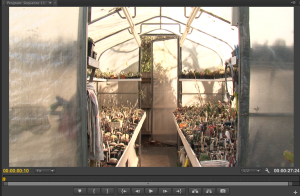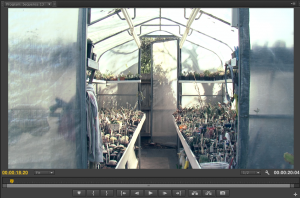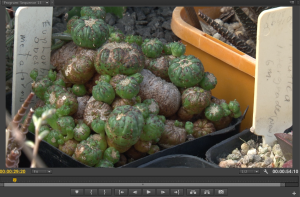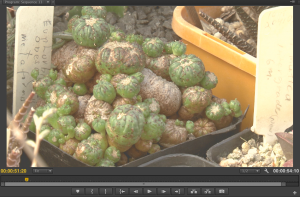There is an idea that I heard saying that every story line has been told in all the film that have been created in the past and therefore the only original stories to tell are futuristic. I don’t know true this is, however it has caused me to me to consider the importance of originality when it comes to filmmaking. It is what makes the audience engage with the film that they are watching. This originality doesn’t need to be a new story line, or a new genre, if you are creating a film that is similar to one that have been created before, it is important to put your own touch on it. I think that the most exciting way this can be done is through an innovative and creative way of shooting the film. The work we have been doing in the scene has shown me that the simplest of camera moves, or shot angels that have come up in class through experimentation, are the things that could make the difference between ‘another main stream Hollywood film’ and a new and exciting film that has not been seen before. This is an exciting thing to be thinking about while researching through practice in class.
About Time Scene Deconstruction
The scene from About Time in which Tim says goodbye to his father for the last time is constructed simply yet interestingly. It is created with a simple formula of mid and wide shots in order to establish the scene, where they are and therefore why they are there. The location has been established earlier in the film the focus is not on the location, it is just showing the audience where the characters are situated. From then there is a standard switch between over the shoulder shots as the two converse; as the conversation becomes more meaningful and intimate, the shots get tighter in order to focus on the emotions being portrayed by the actors.
These shots that they switch between are the same, they have shot the scene multiple times from different angels then cut the parts needed together. The timing between the shots is the same, once they character has spoken it switches straight to the other character. The pacing of the scene is slow, however the switching between the shots is fast moving and snappy.
One of the more interesting camera moves is when rather than sticking to the back and forward formula, that the scene has been previously made from, the camera follows the father in a panning shot as he walks towards his son. This causes the audience to feel the shift in the scene as things go from reasonably light hearted, to sad serious. It then returns to the back and forward over the shoulder shots, seen so often in big budget romantic comedy films.
The shots are not straight on, catching the scene from a slight angel with every shot.
The aspect that I find most interesting about the construction and shooting of this scene is that the shots are not steady. They are shaking, in a good way. This is seen throughout the film, however I noticed it more in this particular scene than in others, I think this is because this scene is slower moving and more focused on just the two characters than other scenes in the film. I do not know why the scene, and the film as a whole, was shot with this shaking technique, but it intrigues me and I find it works in a kind of weird way.
The Personal Take on Creativity
The exercise in week one caused me to realise the many different ways that one situation can be taken. One script gave our group of four heaps of different ideas and inspiration to try many things. All of these different opinions helped to build more new options of creating the scene. I found that there is not necessarily a right or wrong way to create a scene, some options may be better than others, but that does not make them the right and only way to create the scene. This notion of ‘better’ is also debatable seeing as different people can have vastly different opinions of art and literature. While reflection on this I started to watch people walk by and looked around at the conversations people were having around me (at Melbourne Airport) this caused me to consider the fact in a way I was watching scenes of other people’s lives, I was viewing and judging the situation in a certain way that the person sitting next to me could have had a completely different take on. This is reflective of the idea of different people’s ideas when it comes to creating scenes. There are millions of different scenes to be made and millions of different ways to create these scenes, you just have to find the way that you think works best with your film.
What I Think This Course Is About And What I Hope To Learn From It
Using the skills I learnt in TV1&2 (keeping them fresh and up to date as well as building on them) we explore and focus on making that one powerful scene in a film, either the ‘wow’ moment in the film or just a scene sharing a bit of information that is not very exciting; this course will show us how to see and create a scene on it’s own merits and to see them as almost individual films; as well as the building blocks that create the film on a whole. By doing this we will be able to explore more innovative, creative and special ways to capture individual scenes and films.
‘The Police Are Here’
his scene from The Grand Budapest Hotel stood out for me when I watched it for a number of reasons, the main reason being the humor and individuality of the scene. It is the construction of the scene and the use of camera coverage that allow these aspects to shine through.
The camera coverage is very broad throughout the scene, avoiding close ups at any stage in order to capture the full picture. The coverage is similar to that of a play. The camera has a maximum of two viewpoints in any of the three areas shown and never moves, there is no panning, lilting, zooming or tracking at all in this scene, and the camera remains still. This reflects the personality of the main character who is always sturdy, clam and in control. His personality is portrayed through the coverage and construction of the scene rather than through his lines or close ups revealing his emotions. The scene shows the first break in his character as he runs from the police, however the camera remains still and reliable just like the hotel itself. In many films a police chase would call for fast s moving tracking shots, however this scene takes a very different approach that allows the individual nature of the film and its characters to stand out.
Film TV reflection 5 qu. 2
At the beginning of Film/TV 2 this semester we were asked what we wished to gain from the course. My response to this was mainly to gain a better understanding of the technical side of the film process. As well as expanding my knowledge of what is needed to produce a documentary film. When it comes to learning about the process of producing a documentary, it was impossible to partake in this course without gaining a solid knowledge in the subject; so I am extremely happy with that aspect of what I gained from this course.
I am also happy with how I took on the challenge of technical roles, when my strengths are in the organisational roles of film making. Last semester I found that I lacked any true understanding of sound or filming. This semester I feel as though, while still not being the best sound technician or DOP I now have the skills and knowledge to do the job. I feel as though this course has given me a solid knowledge and understanding of the theoretical side of film making as well as proving me with extremely good piratical experience.
These are the main things I wished to gain from the course this semester and therefore I feel as though this semester has been a huge success for me!
Film TV Reflection 5 qu. 1
This is the original screen shot of the first shot Hannah and I colour graded:
The first screen shot of a colour graded shot is when we used the three way colour corrector to change the shadows, mid tones and highlights to pink and red colours. This caused the shot to become warmer while also making the shot seem kind of scary!
On the second go we had at changing this shot, we used the three way colour corrector again, but this time changed the shadows, mid tones and highlights to blue colours, creating an extremely cold feel to the shots.
Here is the original screen shot of the second clip we played with the colour grading. When editing this shot, we focused more on playing with the brightness and contrast, and how changing the two made dramatic changes.
The first shot shows when we lowered the brightness and increased the contrast, creating a very gloomy and mysterious shot.
The second time we did the opposite, lowering the contrast and increasing the brightness. this created and very light and washed out shot.
When playing with the colour grading, we used extreme examples of each to try and gain a better understanding of what each setting did, rather than making changes we would actually include in our film.
Film and tv reflection 4 qu 3
Something that intrigues me about the clip is the use of music and close up shots. The combinations of the fast passed music and the clips of the fast moving traffic creates an intense feel that draws you in and makes you want to see more and see what the documentary is about. The fact that the shots of the traffic are close up also creates an intensity and unease as you cannot see the cars approaching, they just appear speeding through the shot.
Film and TV reflection 4 QU2
Some of the short cuts in Adobe Premiere that I think are extremely useful are:
1. The nudge clip ones:
– Nudge Clip Selection Left Five Frames: Shift+Cmd+Left
– Nudge Clip Selection Left One Frame: Cmd+Left
– Nudge Clip Selection Right Five Frames: Shift+Cmd+Right
– Nudge Clip Selection Right One Frame: Cmd+Right
I am terrible at moving clips just a frame or two one way, this short cuts makes this process precise and easy!
2. The simple Selection key: V. The best and most useful short cut there is
3. Creating a new bin to sort the footage. The main task we have to complete at the moment is sorting through hours of footage that we have and categorising it into different topics. Cmd+/
4. I aslo think the Add Edit to all Tracks could be helpful in editing our footage as many of the clips have the same problems and we could add the fix to all of them at once. Shift+Cmd+K
Film TV 2 reflection 3 qu. 2
Fiction and Non-Fiction : The Great Divide
Two point from this reading that interested me:
1. Re-enaching the real: the Performing of real-life scenarios
It is difficult to find the line between fictional and non fictional moments when re-creation is involved. The difference between ‘based on a true story’ and re-enactments of moments that happened in the past is extremely hard to define. There are many different classifications of these moments, such as documentary, drama-documentary and documentary-drama. Where the classification between fictional and non-fictional is drawn in relations to these situations, I am still not entirely sure!
2. Rights and Wrongs
I have always know that you must have the rights to fictional story in order to crate a film about it, however I have never considered an event or occurs that actually happened ‘belonging’ to someone and that person or com pay having power to make money off and do whatever they wish to with it.
Fiction and nonfiction : the great divide? In Ward, Paul. Documentary : the margins of reality, (p. 31-48). London : Wallflower, 2005.





